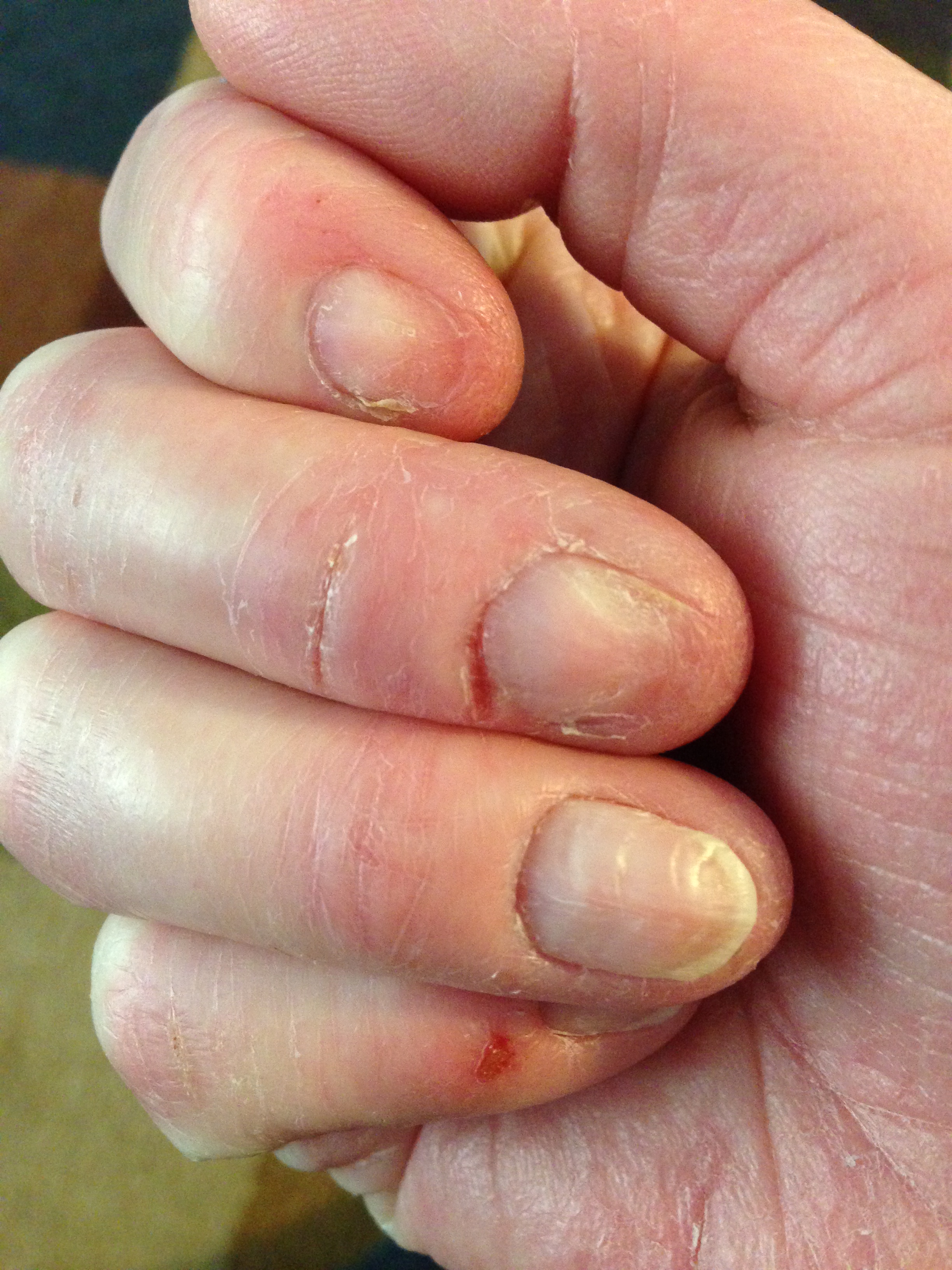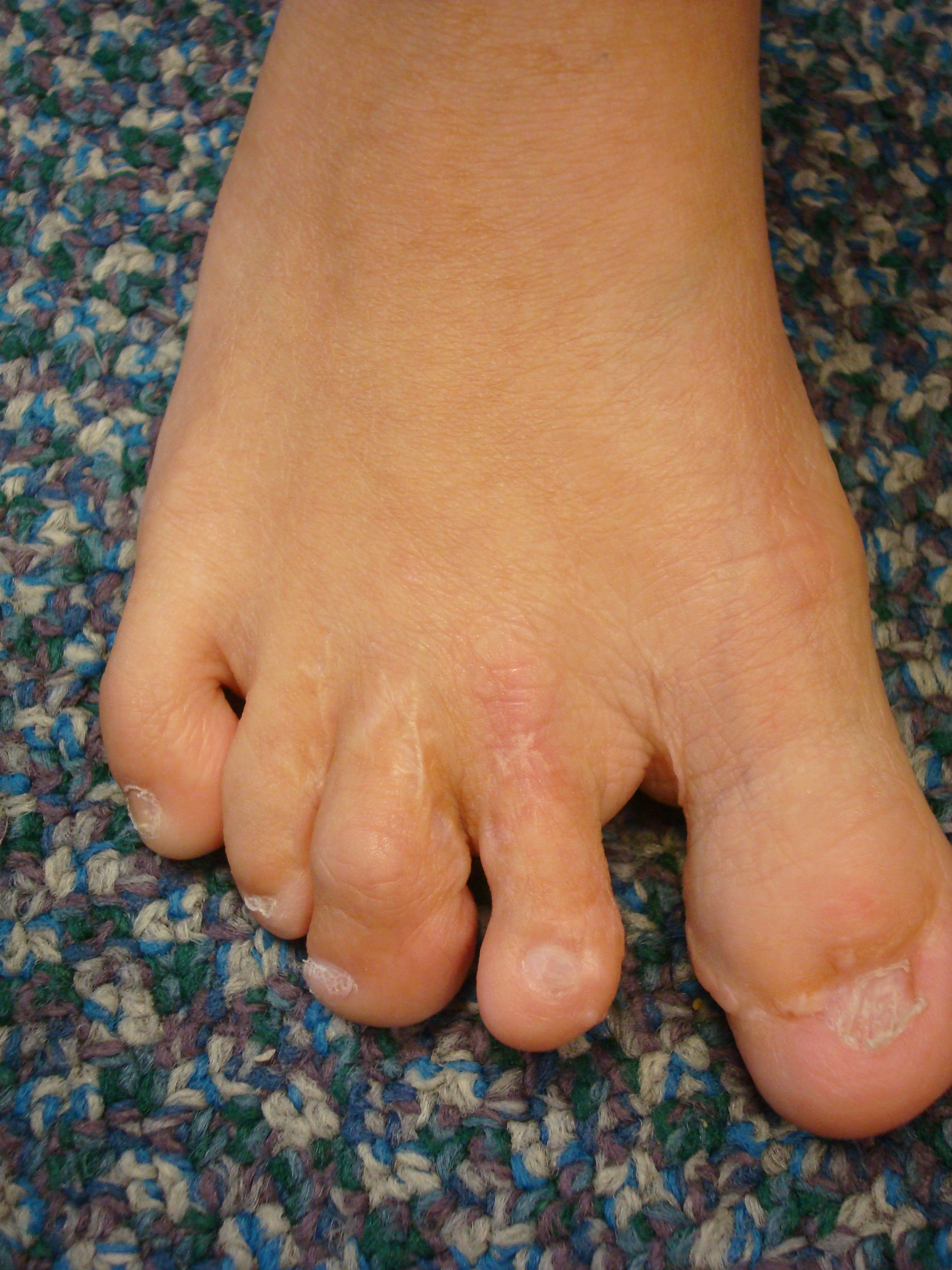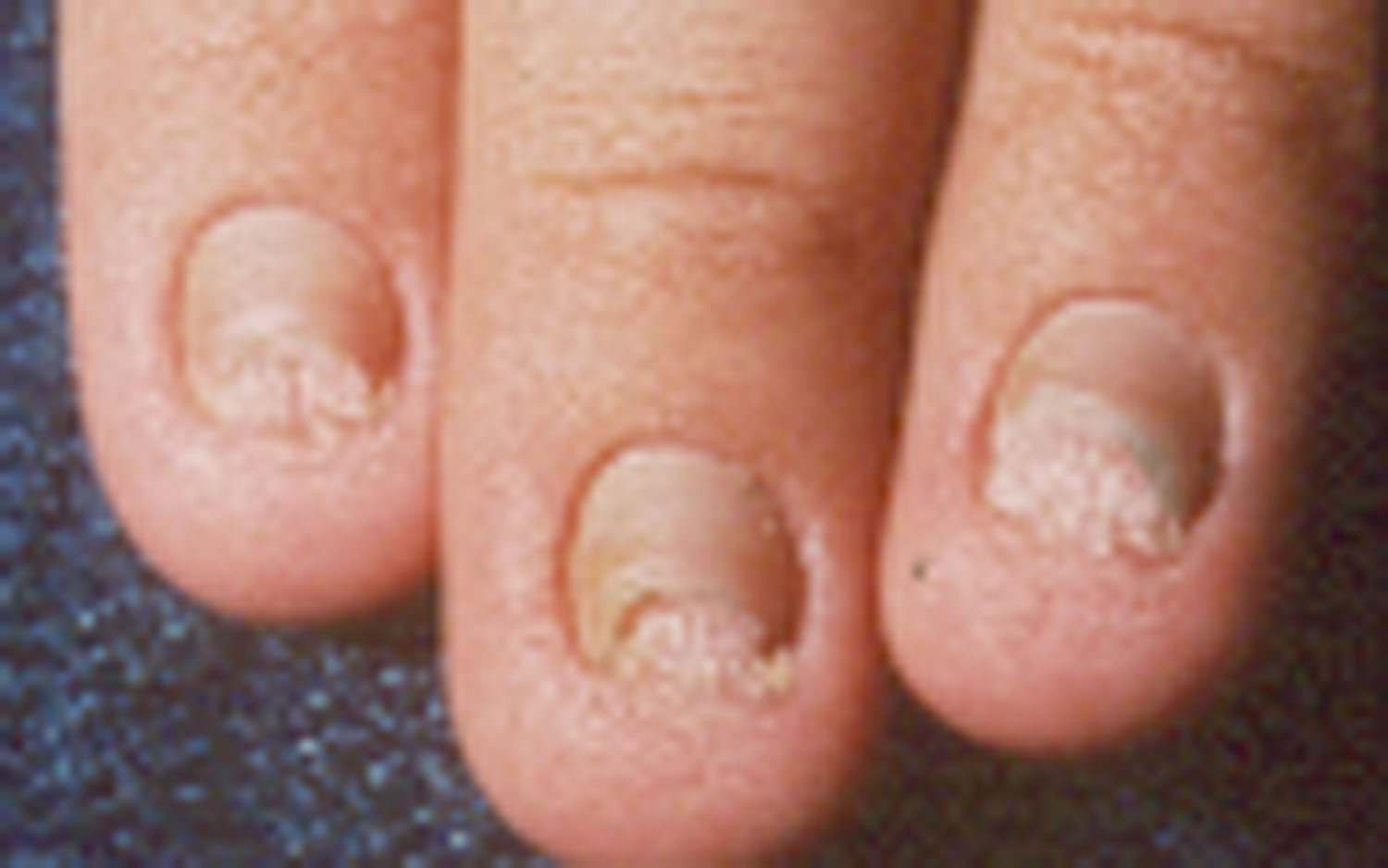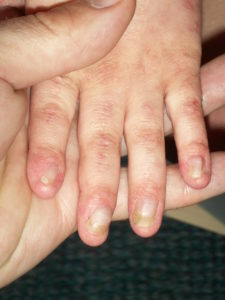The nails in some types of ectodermal dysplasia may be…

- poorly developed,
- small,
- thick or thin,
- brittle,
- discolored,
- cracked,
- abnormally curved, or
- ridged.
In addition, they may grow slowly or shed periodically and may develop light spots, lines, or patches.
The nails and surrounding cuticle area may become infected by fungus, yeast, or bacteria. If this occurs, nails may become thick or discolored, and the area may develop a bad odor, or become swollen and tender.

Treating Nails in Ectodermal Dysplasias
Like the hair, nails are made up of dead protein. Medications will treat secondary infections but will not correct the inborn nail defects.
- Lubricants such as petroleum jelly or lanolin can be massaged into the nails to reduce some of the dryness, brittleness, or cracking.
- The nails should be kept short and trimmed smoothly.
- Thick nails can be filed with the fine pumice used by beauticians for pedicures. Pumice can be purchased from most beauty supply companies.
- Thick, crumbly nails may indicate an infection and should be examined by a physician. This is especially true if the skin around the nail is swollen, red, tender, or if it drains a yellow colored material.

Synthetic nails (sculptured nails) are available. Not everyone can use these products, because they may cause further damage to nails or allergic reactions. If sculptured nails are considered, a technician experienced in the proper technique to apply them should be consulted.
This article is adapted from content in “A Family Guide to the Ectodermal Dysplasias” published by the National Foundation for Ectodermal Dysplasias.”
More articles you may be interested in:

[…] Ectodermal Dysplasias: How Nails Can Be Affected […]
[…] Ectodermal Dysplasias: How Nails Can Be Affected […]
I think I may have this. I was born with these very embarrassing toenails (big toes and pinky toes only).
Hello, Latassia! We encourage you to speak with your doctor and potentially schedule an appointment with a geneticist to discuss a possible diagnosis.
[…] cienkie, kruche, popękane lub w inny sposób osłabione paznokcie […]
Please send your question to info@nfed.org so that we can translate. Thank you!
[…] thin, brittle, cracked, or otherwise weakened nails […]
You can learn more on breast development and ectodermal dysplasia at https://nfed.org/blog/breast-development/ Contact me with additional questions at kelley@nfed.org
Thank you,
Kelley, NFED Director, Family and Community Programs
The first picture is my nails when I was younger